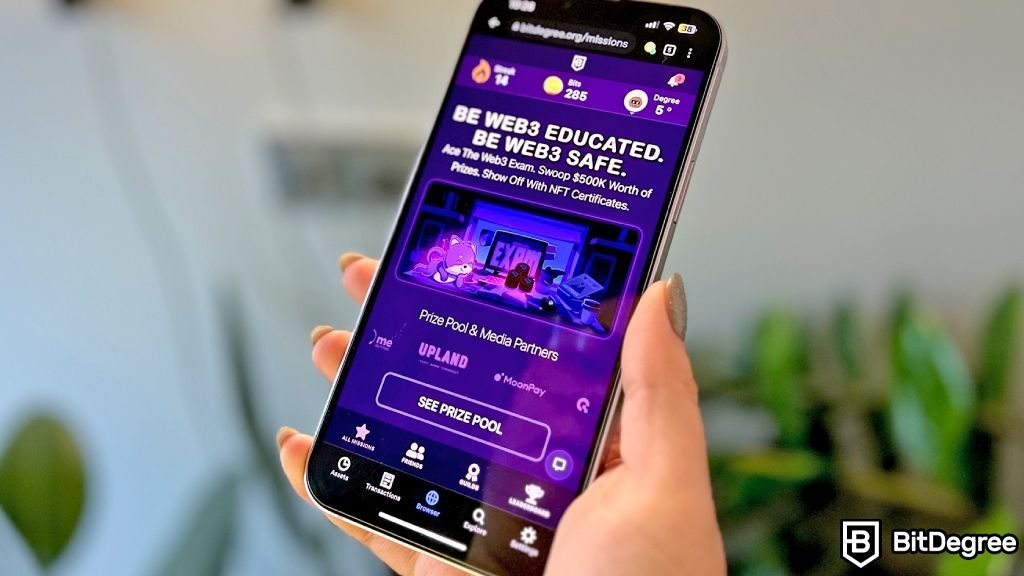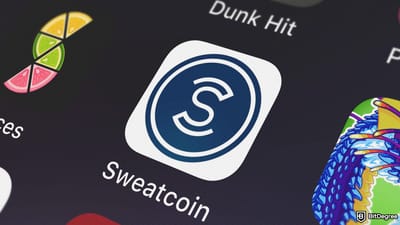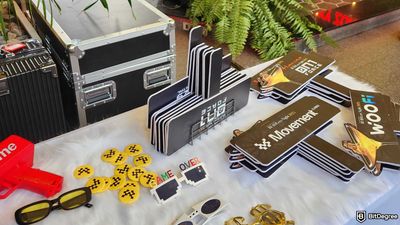Key Takeaways
- The BitDegree Web3 Exam involves a variety of task types for the student to tackle, and spans three difficulty levels - Starter, Explorer, and Evangelist;
- As you complete each level, you'll receive Bits, grow your Degree, and will have the opportunity to mint a free NFT Certificate of Completion;
- Both the Exam and accompanying Missions have prize pools that will be distributed during Lucky Draw events, at specific points in time.
Stop overpaying - start transferring money with Ogvio. Sign up, invite friends & grab Rewards now! 🎁
The Web3 Exam is certainly one of the most ambitious and innovative projects that BitDegree has ever worked on - it’s undeniably a huge milestone in the realm of digital education. Soon after the initial launch, questions such as “how to take the BitDegree Web3 Exam?” started popping up online.
Well, I’m here to answer them.
The Exam is, for the most part, rather self-explanatory. It features short guides and informational popups that explain the majority of the aspects that you need to know, in order to be able to participate in it successfully.
That being said, it’s certainly true that having a thorough step-by-step guide on how to tackle some of the main points of the Web3 Exam is quite helpful. So, if you’re looking into how to use the BitDegree Web3 Exam, or maybe even how to complete Missions on BitDegree, bookmark this page - below, you’ll find all of the information you might need!

Did you know?
Subscribe - We publish new crypto explainer videos every week!
What is a Smart Contract? (Explained with Animations)


Table of Contents
- 1. How to Take the BitDegree Web3 Exam: The Basics
- 1.1. Choosing the Exam Level
- 1.2. Entering the Exam
- 2. Taking the Web3 Exam: Tasks Types
- 2.1. Quizzes
- 2.2. Third-Party Content Tasks
- 2.3. Blockchain Actions
- 2.4. Social Tasks
- 3. Rewards / Prizes
- 3.1. What are They?
- 3.2. How to Get Them?
- 4. The BitDegree Missions
- 5. Who is the BitDegree Web3 Exam for?
- 6. Conclusions
How to Take the BitDegree Web3 Exam: The Basics
To ensure the comprehensiveness of this BitDegree Web3 Exam tutorial, we’ll take things from the top, and start at the very beginning. Let’s assume that you’ve just entered the BitDegree homepage for the first time in your life, after hearing about the amazing Web3 Exam - how do you proceed?
Latest Deal Active Right Now:Here’s a step-by-step breakdown:
Step 1: Navigate to the BitDegree official website, and click on the big, green “START NOW” button at the center of the page. You can also reach the Exam page via a direct link: https://www.bitdegree.org/missions

Step 2: Now that you’re in the right place, click the “CONNECT TO GAIN” button at the top-right corner of the page.
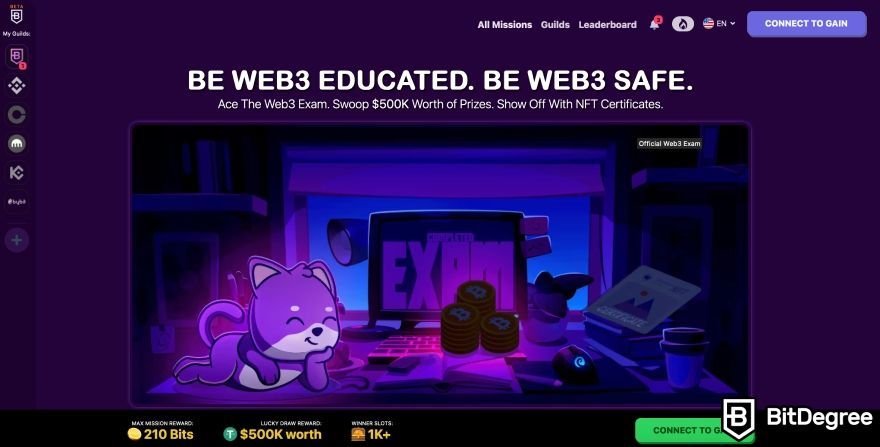
Step 3: A popup will appear, asking you how you want to connect to the platform. You have three options - connect via a Coinbase Wallet, a MetaMask wallet, or with your email.
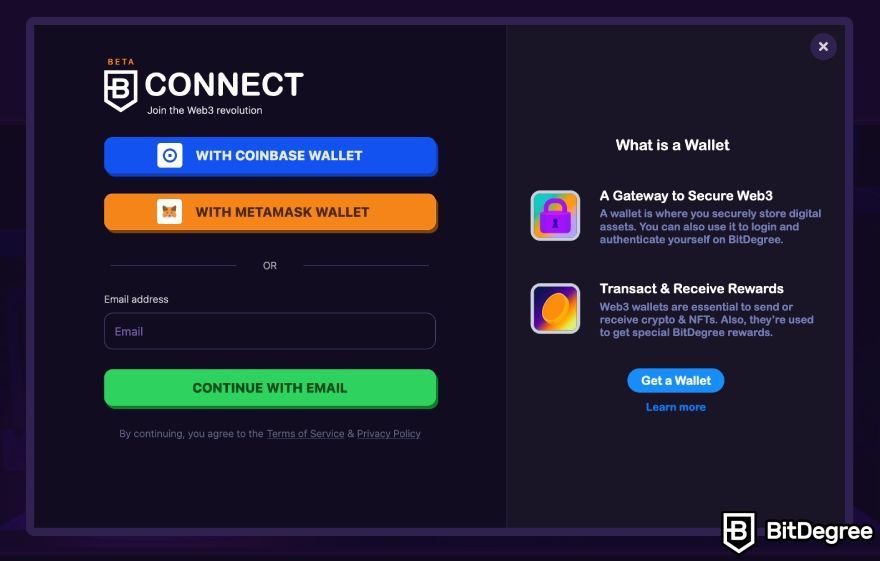
Now, whichever is most comfortable for you is the one you should pick. That being said, do note that you will later need to add the other information to your account, as well.
Confused? I’ll put it this way - if you want to learn how to take the BitDegree Web3 Exam with a MetaMask wallet, you will still need to add an email address to your account later on. And, if you decide to log into BitDegree via your email (that is, create an account), you will then later need to connect your wallet, since it’s required to complete some tasks in the Exam.
Makes sense? Great - let’s continue.
Step 4: After logging in, you’ll be greeted with some welcoming messages, as well as 5 Bits to start you off. Bits are like experience points - I’ll tell you a bit more about them later.

Now, you have two paths that you could take - either jumping right into the Exam, or setting up your account further. If you choose the former, you’ll need to set things up during the Exam, when prompted to do so.
If, however, you want to deal with all of the boring stuff as soon as possible, and then really start looking into how to take the BitDegree Web3 Exam, then hover over your profile picture at the top-right corner of the page, and click “Settings” on the dropdown menu that appears.
You'll see a page that looks a bit something like this:
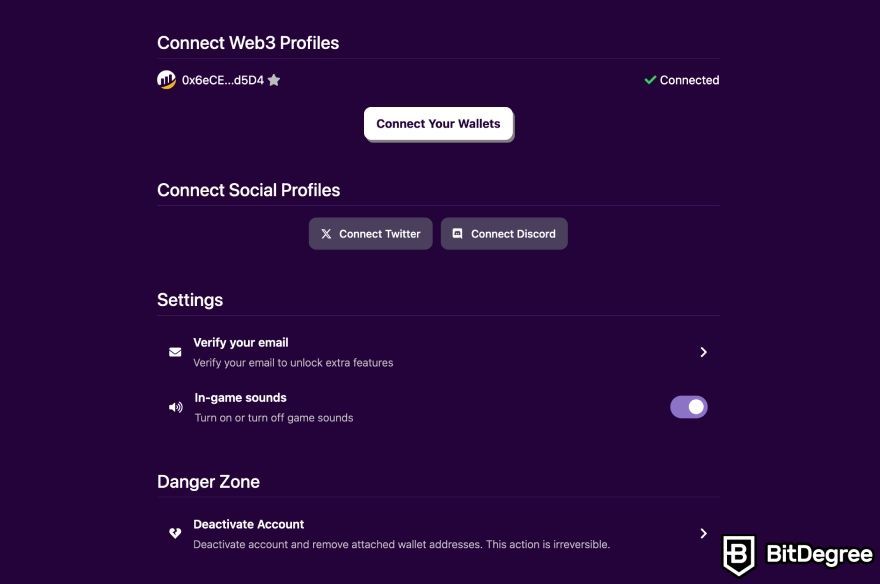
I’ve chosen the wallet BitDegree Missions login, so that’s already taken care of in my account. But, we still need to add an email address (and verify it), and connect our socials - namely, Discord and Twitter.
Once all of that is done, we can finally move on to the Web3 Exam in question!
Choosing the Exam Level
Back on the BitDegree Guild page, scrolling a bit down, you’ll see the three BitDegree Web3 Exam levels - Starter, Explorer, and Evangelist.
All that’s standing in between you and learning how to take the BitDegree Web3 Exam is a choice - which level should you tackle?
Well, the answer is a bit more complex than just “this” or “that”.
First of all, know that you are able to take all three levels of the Exam - there’s no set limit, and no secret price tag that would reveal itself after completing any one level. Part of understanding how to use the BitDegree Web3 Exam is knowing that the entirety of the Exam is free - no secret costs, no hidden fees, none of that.
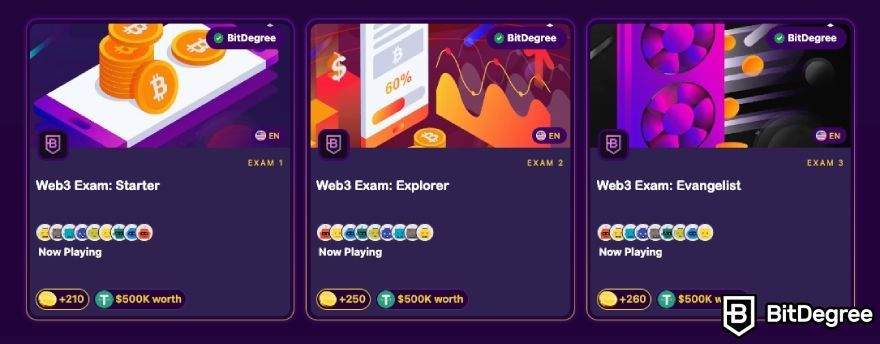
Back to the levels, I’d highly advise you to start from level one - Starter -, and make your way up from there. If you’re new to crypto and the wider Web3 space, in general, this level will serve as the perfect option for starting out.
Of course, experienced learners might feel the urge to jump straight to the more advanced levels of the Web3 Exam. That’s fair - you’re certainly free to do so, if you so wish to!
That being said, each level brings with itself increasing difficulty, new task types, different NFT Certificates of Completion, and profile badges. Not to mention, if you face the Exam during the time when the prize pool is still active, completing multiple levels increases your chances of winning something during the Lucky Draw events!
More on all of that later - let’s move on.
Entering the Exam
For the sake of this “How to Take the BitDegree Web3 Exam?” tutorial, let’s assume that we’re going to tackle the Starter level of the Exam.
Truth be told, however, no matter which Exam level you might pick, one last thing to do before you hop into the action is to go through the rules. You’ll find them at the bottom of the page of each of the Exam levels.
There aren’t really many specific rules to be aware of, and most of it is self-explanatory - however, it’s still a good idea to keep the rules in mind, just in case.

No matter when it is that you’re taking the Exam, two big things are likely going to stand out, importance-wise. First of all, it wouldn’t be a comprehensive BitDegree Web3 Exam tutorial without mentioning the fact that NFT Certificates of Completion are achieved by scoring at least 10 points in the specific Exam level.
So, while theoretically that means that there might be people who won’t receive the ability to mint the certificate, I’ll give you a tip - if you use the provided content to find answers to the Exam questions, you’ll do just fine.
Another rule to keep in mind is that the Exam can be retaken as many times as you wish. This, however, will reset your Bits and Degrees - on top of that, the NFT Certificates of Completion are issued for your first take.
Speaking of “takes”, how to take the BitDegree Web3 Exam, then? Once you’re ready, click on the first round at the top of the page, and start the Exam!
Taking the Web3 Exam: Tasks Types
So, with every single important detail leading up to the actual Web3 Exam covered, it’s time to tackle the main event itself.
Now, look - obviously, I won’t be giving out answers to the questions of the Exam. Sure, this is a “how to take the BitDegree Web3 Exam?” tutorial, but it’s not *that* kind of tutorial, if you catch my drift.
What I *can* give you, however, are descriptions of task types that you’ll encounter on your Web3 education journey.
Quizzes
The most common task type you’ll come across are the quiz tasks. These tasks involve:
- Picking the correct answer;
- Picking multiple correct answers;
- Typing out the correct answer;
- Sorting the correct answers in the correct order.
These tasks are almost always going to be accompanied by content pieces - so, you have the task on your sidebar to the right, and the content piece at the center of the page. The exception here would be the Evangelist level of the Exam - the entirety of this level takes place on dark pages, with no content pieces attached.
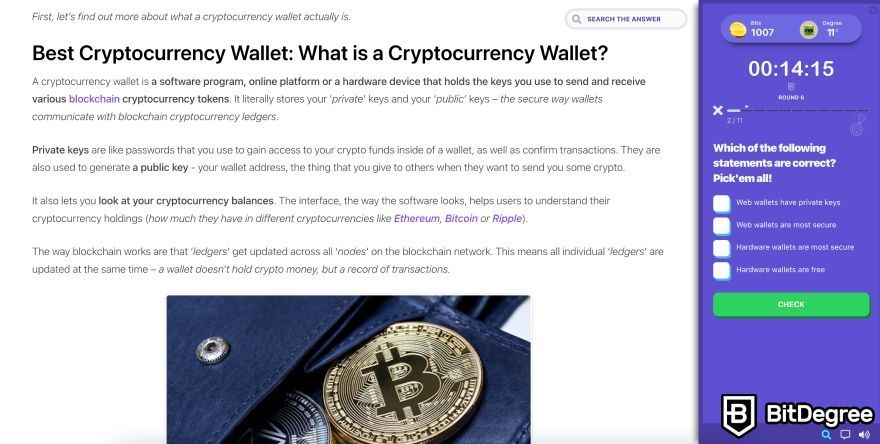
All answers to the presented questions (tasks) can be found in those said content pieces. You’ll have a dedicated search bar at the top of the screen, where you can search for specific keywords or phrases, and find the correct answer.
Allow me to reiterate - no matter what task you are faced with, the answer can always be found within the presented content. The logic behind this is simple - students are encouraged to engage with the content, and learn new information while they’re completing the Exam.
Third-Party Content Tasks
From the title alone, this type of tasks might sound pretty weird. Allow me to elaborate.
“Third-party content” tasks are ones that will require you to visit certain specific websites or platforms, and read / watch / listen through the content based on them. Then, when you get back to the Exam page, you’ll be given questions (quiz) based on the information that you’ve learned.
The actual content that you’d be directed to learn from could differ quite a bit. Sometimes, it might be some informational page on a leading crypto exchange platform, such as Binance. Other times, it might be a video, based on some dedicated page on BitDegree.
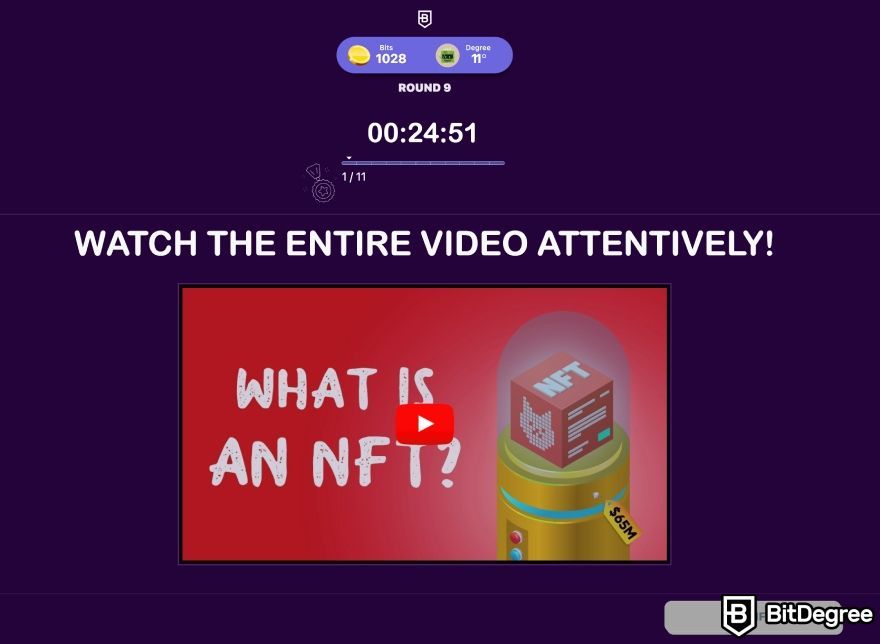
In any case, these tasks are rather straightforward - all that you need to do is make sure that you memorize the information presented, and then complete the following quiz correctly.
Admittedly, while third-party content-based tasks aren’t a bottleneck when it comes to learning how to take the BitDegree Web3 Exam, the one task type that students sometimes struggle with are blockchain action tasks. Let’s talk about them in some detail.

Did you know?
Subscribe - We publish new crypto explainer videos every week!
Is Cryptocurrency a Good Investment? (5 PROS & CONS!)


Blockchain Actions
As the term itself likely implies, blockchain actions will require you to perform certain tasks on the blockchain. The tasks might include, but won’t necessarily be limited to:
- Swapping tokens;
- Staking and unstaking tokens;
- Providing or withdrawing liquidity;
- Revoking permissions.
Now, seeing as you’re looking at how to take Web3 Exam, I assume that the presence of blockchain actions isn’t too big of a surprise - after all, blockchain technology is one of the pillars of Web3!
The presence of blockchain action-requiring tasks can be found in both the Web3 Exam, as well as BitDegree Missions, but we’ll talk about those a bit later. For now, it’s important to establish one thing - these tasks are absolutely nothing to be feared!

If you’ve never performed a crypto transaction before, let alone staked some coins or revoked wallet permissions, I get it - it can sound quite intimidating. That being said, BitDegree provides students with all of the information that they might need, on how to complete these tasks.
Specifically, every single blockchain action will have short, picture-filled and step-by-step tutorials for the user to follow. Even if this is your first time doing something like this, you don’t need to worry - if you follow the tutorials precisely, you’ll be golden.
That’s why I said, when talking about the BitDegree Missions login, that you will need to add a wallet to your account, at some point. During the BitDegree Web3 Exam, MetaMask or Coinbase Wallet are going to be needed to tackle blockchain tasks - it’s worth keeping it in mind!
Social Tasks
Last but not least, we have social tasks.
An example of a social task within the BitDegree Missions and Web3 Exam would be a tweet (post) that you have to share on Twitter (X), or a Discord group that you need to join, and write a message in.
Pretty self-explanatory stuff. But - why are such tasks needed, in the first place? How are they related to Web3 education, and especially - an Exam?
It’s pretty simple, really. Learning how to take the BitDegree Web3 Exam, you will soon find out that it’s based on two major concepts - gamification (with the goal of "producing a playful experience that fosters motivation, involvement, and fun"[1]), and incentivization. However, another point that BitDegree is perfectly aware of is the fact that Web3 students learn by doing - in other words, that theory needs to be supplemented with practice.
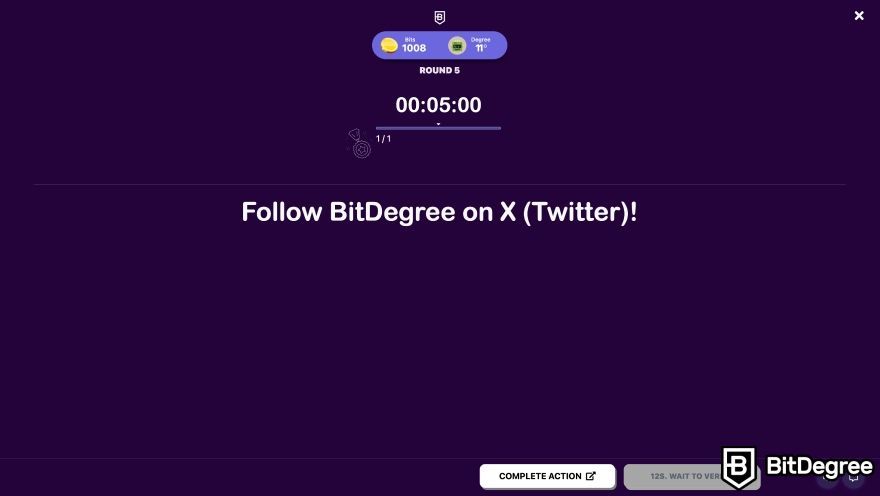
This is evident from the blockchain actions present in the Web3 Exam. Social tasks are an extension of that.
In Web3, a lot of the ‘learning’ process takes place in actively participating in various communities, and engaging with your peers. Joining relevant Discord channels, engaging with posts, and sharing your experiences are all great ways to start growing your understanding of the space!
Going back to the question of how to take the Web3 Exam, social tasks shouldn’t pose too much of a challenge - when encountering such a task, simply follow the instructions on the screen, and if you do everything right, you’ll be able to pass the task, no problem!
Rewards / Prizes
Now, that about wraps things up as far as the Exam tasks are concerned.
That being said, we can’t really consider it a “done deal” without talking about the rewards and potential prizes - two very exciting prospects of this initiative!
What are They?
So, as you learn how to take the BitDegree Web3 Exam, what are the rewards and / or prizes that you can expect to receive?
For starters, let’s address the elephant in the room, and establish the difference between “rewards” and “prizes”. Yes, there is a difference, and yes, the Web3 Exam offers students both.
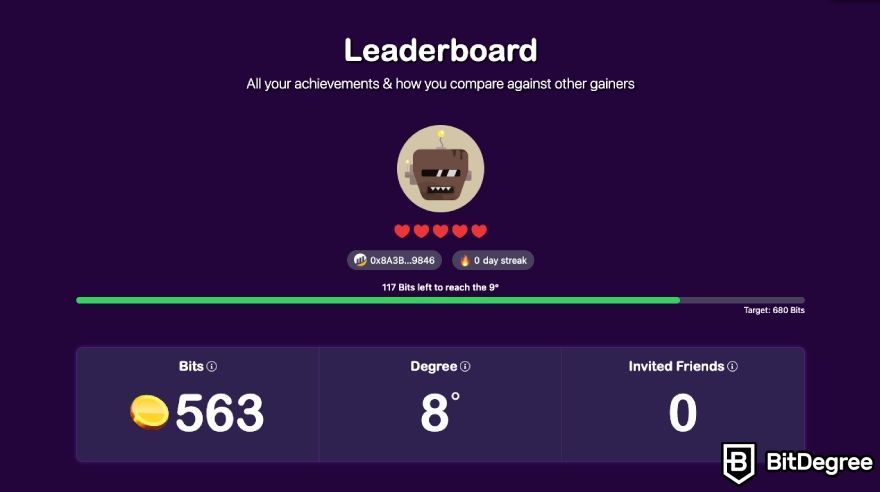
Rewards are something that you’re guaranteed to receive, as long as you meet certain criteria whilst taking the Exam. An example would be when you go to the BitDegree Missions, log in, and instantly receive your first reward - 5 Bits. Easy!
Bits are actually a great example of the rewards that you’ll receive. They’re like in-game experience points (XP) - the more Bits you have, the higher will your Degree (level) go. More on Degree perks later.
Another huge reward that everyone is capable of receiving would be the NFT Certificates of Completion. These are blockchain-based ‘soulbound’ NFTs (meaning, they can’t be sold or transferred to other wallets) that showcase your skill level, when it comes to Web3. All three Exam levels have NFT certificates of their own, with differing score ranges.
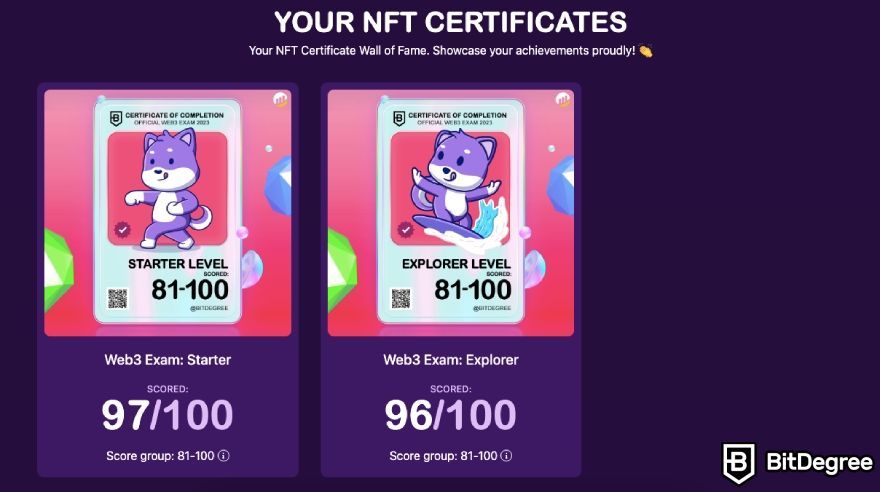
Prizes, on the other hand, aren’t guaranteed - you can win them, if you’re lucky, and doing well in the Exam increases your chances of winning.
It would be a lackluster BitDegree Web3 Exam tutorial if I didn’t mention the fact that the Exam comes equipped with a prize pool worth over $500,000! That’s an absolutely incredible number!
Prizes include, but are not limited to, project native tokens, USDT, service subscription plans, trading fee discounts, and many more. The prize pool is provided by BitDegree and some industry-leading partners, such as Unstoppable Domains and Ledger.

- Secure and reliable
- Accepts fiat currencies
- Lots of trading options
- Reputable exchange
- Accepts fiat currencies
- Offers various trading options

- Huge trading variety
- Regulation-compliant around the globe
- Fair trading fees
- Beginner-friendly
- A wide array of features
- Vast number of different crypto coins & tokens

- Beginner-friendly
- Secure
- Decent trading and withdrawal fees
- Crypto.com Visa Card
- Automated tools & bots
- Ecosystem synergy with CRO
How to Get Them?
Rewards and prizes are cool, but how do you actually get them, then?
Well, in the case of rewards, if you know how to take the Web3 Exam, you’re already half-done. In order to earn the NFT Certificates of Completion, all that you need to do is score at least 10 points in either of the levels of the Exam. Admittedly, at least with the Starter and Explorer levels, this shouldn’t prove to be difficult to do.
Bits and Degrees are kind of the same deal, as well. As you complete rounds within the Exam, you’ll receive Bit rewards. The more tasks you get right - the more Bits you’ll get per round / Exam level.
One thing to note here is that the Exam is repeatable, so you can take it as many times as you’d like. However, you will only receive the NFT Certificate of Completion for your first try. On top of that, whenever you retake the Exam, the Bits and Degrees for that level are reset.
This should serve as some great motivation to learn how to take the BitDegree Web3 Exam, and ace it first try!

Now, as you collect Bits for doing absolutely wonderful in the Exam, you will grow your Degree - I’ve mentioned that already. What I didn’t mention is the fact that Degrees impact your odds of winning the Lucky Draw events, during which the prize pool is being distributed!
The next Lucky Draw will take place in February 2024. So - if you’re reading this later on in the year, be sure to check whether or not the prize pool is still valid, or if there are additional Lucky Draws on the horizon!
In addition to all of that, students can also receive badges for their achievements - all of your current badges can be observed within your profile section on BitDegree.
Lastly, there’s a leaderboard in the works, as well - very soon, you might be able to compete with friends, and showcase your dedication to learning Web3 in one more way!
The BitDegree Missions
Up to this point in the BitDegree Web3 Exam tutorial, we’ve frankly talked about how to take the Web3 Exam. I do also want to take a minute and mention the BitDegree Missions, as well.
Missions are additional pieces of content that the user can explore within the BitDegree Guild. They share a lot of differences, as well as similarities with the Exam.
Missions are themed, and will vary in length quite a bit. Some are as long as any of the Exam levels, while others could be comprised of only a few rounds. Furthermore, the themes differ, as well - everything from acquiring your first crypto coins, all the way to diving into the intricacies of specific Web3 projects.
The BitDegree Missions login is the same as the one you use to log into the the Exam - in other words, you’ll be using the same account to navigate both, so there’ll be no need to create new ones.
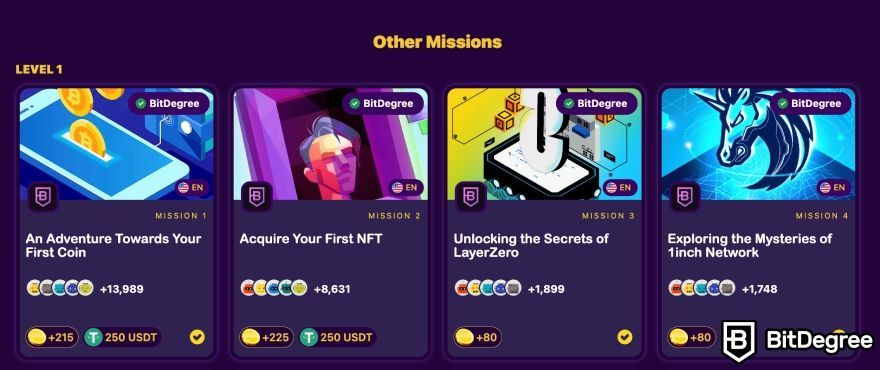
Now, if you’re wondering how to complete Missions on BitDegree, rest assured - the process is the exact same as with the Exam. You go through rounds, complete different tasks, and accumulate Bits.
One thing that’s going to be different in regards to how to complete Missions on BitDegree is the hearts system. Upon entering a Mission, you’ll notice hearts on your sidebar. As they likely imply, these are your “life points” - each mistake will take one heart away, and you can replenish them by simply waiting ‘till the next day.
What happens if you lose all of your hearts? Well - the points that you’ll receive for this round, as well as all upcoming rounds that you’ll complete heartless, will be halved.
Moral of the story - read the content, take your time with the questions, and try to get it right the first time around! If you do lose all of your hearts, it’s a good idea to wait a day, to maximize your points from the Mission!
Who is the BitDegree Web3 Exam for?
By this point, you should have a pretty good idea of how to take the BitDegree Web3 Exam, as well as the intricacies surrounding BitDegree Web3 Exam MetaMask, Coinbase, and email logins, account setup, and the differences between this product and Missions.
Before I let you go, I do also want to address one final point - a question that comes up from time to time, among people looking to tackle the Web3 Exam.
That question is rather simple - who is the BitDegree Web3 Exam for?
The answer is even more simple, really - everyone. The Exam and Missions are designed with *everyone* in mind.
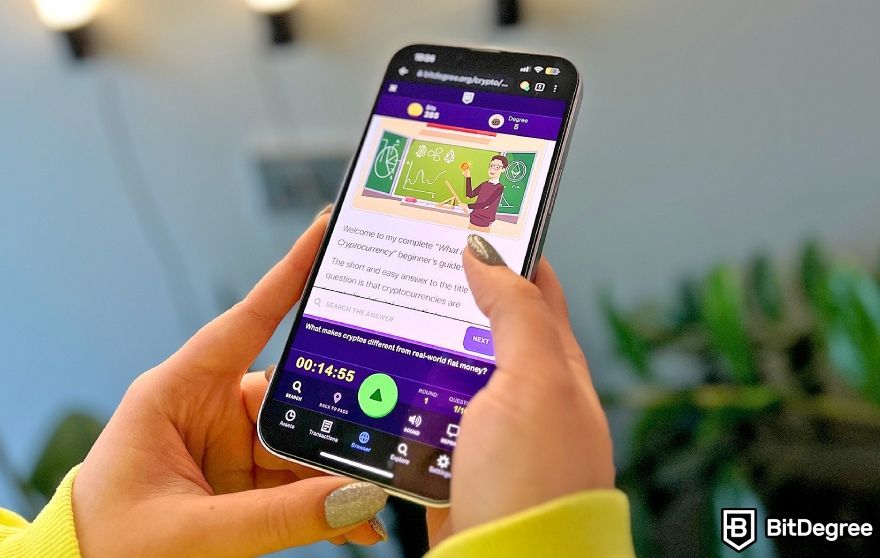
It might seem like a cheap answer, but hear me out. The main goal of the Web3 Exam - and of BitDegree, in general - is to onboard the masses to Web3. “The masses”, being - people from all walks of life, different kinds of professions, careers, hobbies, societies, cultures, and parts of the world.
Such universal products are usually very complicated to create, but this is where the leveled system of the Exam comes into play. Combining scientific research, years of experience, and an expert understanding of the space, BitDegree is able to provide students with an entertaining and unique learning experience. Albeit just one tool of many, gamification is an ever-popular and effective tool to achieve just that[2].
So - being aware of that, no matter if you’ve only learned how to take the BitDegree Web3 Exam today, or have been exploring the wider Web3 space for years now, don’t hesitate! Tackle the Exam, accumulate Bits, grow your Degree, claim your NFT Certificate of Completion, and win some awesome prizes, while you’re at it!
Conclusions
And so, that wraps up my guide on how to take the BitDegree Web3 Exam. Thanks for reading!
I sincerely hope that the flow of the Exam, as well as any and all additional points related to it, are now crystal clear. Truth be told, neither the Web3 Exam, nor the BitDegree Missions aren’t difficult to wrap your head around - all it takes is jumping into the action, and trying it out for yourself.
In fact, that’s exactly what I recommend you do - if the Exam or Missions piqued your interest, make sure to check it out! It’s completely, 100% free to take - no catches, whatsoever.
Tackle the challenge, explore the wonderful world of Web3, and earn your Certificates of Completion. Let’s build the future of Web3 together, one step at a time!
The content published on this website is not aimed to give any kind of financial, investment, trading, or any other form of advice. BitDegree.org does not endorse or suggest you to buy, sell or hold any kind of cryptocurrency. Before making financial investment decisions, do consult your financial advisor.
Scientific References
1. Llorens-Largo F., Gallego-Durán F., Villagrá-Arnedo C., et al.: 'Gamification of the Learning Process: Lessons Learned';
2. Saleem A. N., Noori N. M., Ozdamli F.: 'Gamification Applications in E-learning: A Literature Review'.
